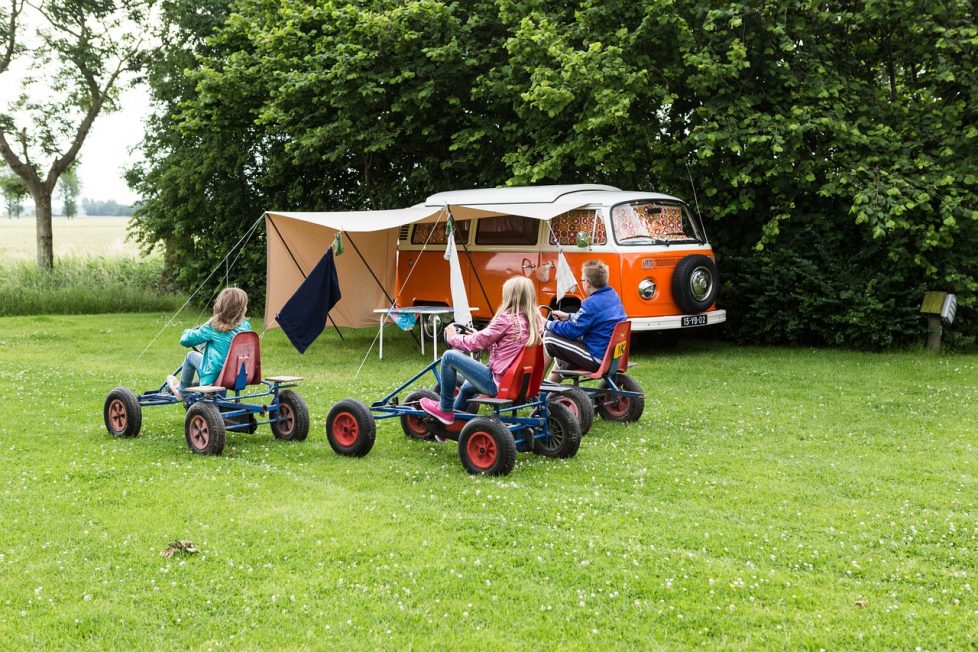How to Protect Your Kids from Pests While Camping


Being close to nature can be an extraordinary experience. There are no limits – hiking, camping, renting a hut, enjoying the fresh air. But as we enjoy our family time near century-old trees or sparkling blue water, there is one thing you always need to keep in mind. Pests.
Insects’ bites are not only unpleasant, but they can also carry disease, and it is vital for us to protect ourselves and our children. In this article, we will guide you through the most important steps you need to take in order to keep your kids safe from insects and enjoy a pest-free camping experience.
The area where you are camping is important. The number one rule is to avoid standing water. Waking up near a lake may sound like a dream but in reality, it’s just a breeding ground for bugs. The best way to avoid this is to pitch your tent somewhere away from water and under full sun, because many insects, like mosquitos, prefer shady places.
Make sure your kid is in clothes in bright colours with long sleeves and trousers. Tuck in the clothes so there isn’t any exposed skin and go with closed shoes. Unfortunately, sometimes mosquitoes tend to bite even through the fabric. Despite this, we are not recommending clothes with repellent coverage such as DEET, for example. Many children get allergic reactions from the chemicals used on them.
Campfires are the best part of a camp. The whole family gathers together, have a lovely meal in the woods, and tell each other scary stories. But aside from that, the smoke from the fire pushes the insects aways. You can burn some sage to further things up, as it’s unbearable for them. If, by chance, you are camping at a place that is not allowing campfires, you can always bring some citronella candles with you. The smell is not a favourite of insects.
What is essential to look for when you are buying a tent for your family vacation is the zipper. When you are camping, keeping your tent zipped is vital. Unfortunately, many tents have bad-quality zippers to keep their prices low. Keep an eye on that, plus you can also search for a tent with fly screens or mesh windows so you can ventilate it regularly.
DEET is a widely used chemical in many mosquito and tick repellents. While these are not so harmful to adults, we need to be more alert when choosing the right one for our children. In many cases, using high doses of DEET on a child results in a visit to the doctor. Here is what you need to know:
Be aware of cosmetic products that have repellent and sunscreen combined. While we can apply SPF frequently, it’s not the same with repellents. These may irritate youngsters’ skin if you put too much. If that is the case, do not hesitate to visit a doctor.
So what can you use if you want to avoid DEET? Thankfully, there are some safer options that can be used on different occasions. Here they are:
Everything seems to be way more exciting during childhood, especially things in nature such as sticks, animals, bugs, mud, water, etc. Our children want to explore the world, and camp vacation gives them the best opportunity to do it. Unfortunately for parents, some of these tempting playgrounds are usually in places where a lot of insects gather. So it’s your responsibility to make sure your kids are not playing with anything that can harm them.
According to specialists from Fantastic Pest Control Australia, other locations you should avoid are places with long grass, ponds, lakes or heavily wooded areas, as they are usually swarming with mosquitos and ticks. And lastly, if you decide to have lunch near a garden or a picnic area, keep in mind that you will most likely encounter bees. Take that into consideration if your child is allergic.
No matter how hard you try to avoid bites when camping, it’s usually bound to happen. So for cases like this, make sure you have a first aid kit filled with the necessary creams and medicine. Start by rinsing the bitten area with cold, clean water – it will help with the swelling and also reduce the itching. Remind your child to not scratch the place as it will worsen.
As soon as you get home or just right before you leave the camping site, check for ticks. Key areas include hair, underarms, waist, belly button and behind the knees. As an additional precaution, shake your children’s clothes well before bringing them inside the tent and put them in the wash immediately when you get back home.
Protecting your kids from pests while camping is necessary but it shouldn’t take away from all the pleasures that come with it. Remember to have fun and explore nature along with your children, teaching them the importance of every small creature, even insects.
